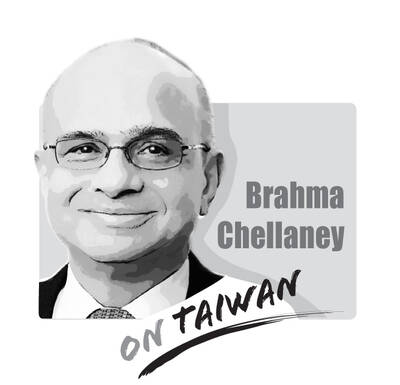Preserving remote places
Chan Shun-kuei (詹順貴) recently discussed the merits of upgrading the Suhua Highway (“Placing facts back in Suhua debate,” Nov. 19, page 8). One consideration I would like to add is whether easy access to every place is really a desirable goal. Disregarding the obvious costs to taxpayer and environment for the moment, building a faster and safer road at first always sounds like a good idea. However, the difficulty of reaching a remote place may enhance the charm of the travel experience.
To use an extreme example: I think most people would agree that being put on top of Mount Everest by a helicopter, although quicker and safer, would not really match the experience of climbing up its flanks for days, risking life and limb. We should value the fact that some places on earth remain remote, and that the effort of getting there is part of the quality of the travel experience.
I have heard it said there is no place in Taiwan that is so beautiful that a little bit of concrete would not increase its beauty. We should perhaps pause for a moment and consider whether the old Suhua Highway, because of the way it is built and the scenery it offers, is not worth preserving, and that the money would be better spent on enforcing traffic regulations and safe driving. From Chan Shun-kuei’s article, it is apparent that the old Suhua Highway is not really inherently dangerous, but that it is reckless driving that endangers people. Several thousand people die on Taiwan’s roads each year, making it a leading cause of death.
I always wonder what kind of money would be thrown at a terrorist group that would annually kill several thousand people, but when it comes to protecting us against the terrorists of the street, the government of Taiwan appears to be especially complacent. Numerous recent letters in the Taipei Times have pointed out that, for a country that has so much going for it, the appalling driving habits and the almost nonexistent enforcement of traffic rules are a real blight on this country.
I would strongly recommend that, in order to protect some of the remaining beautiful, natural and quiet places of Taiwan, the government of Taiwan should spend its money on making its existing streets safer instead of relentlessly building more and more roads into even the remotest corners of the country, or upgrading its existing ones. Thus, the present Suhua Highway would not just become a safer road to travel on, but also a relaxing travel experience through one of the more remote and scenic areas of Taiwan. The charm is in getting there — slowly and safely.
BRUNO WALTHER
Taipei

Taiwan stands at the epicenter of a seismic shift that will determine the Indo-Pacific’s future security architecture. Whether deterrence prevails or collapses will reverberate far beyond the Taiwan Strait, fundamentally reshaping global power dynamics. The stakes could not be higher. Today, Taipei confronts an unprecedented convergence of threats from an increasingly muscular China that has intensified its multidimensional pressure campaign. Beijing’s strategy is comprehensive: military intimidation, diplomatic isolation, economic coercion, and sophisticated influence operations designed to fracture Taiwan’s democratic society from within. This challenge is magnified by Taiwan’s internal political divisions, which extend to fundamental questions about the island’s identity and future
The narrative surrounding Indian Prime Minister Narendra Modi’s attendance at last week’s Shanghai Cooperation Organization (SCO) summit — where he held hands with Russian President Vladimir Putin and chatted amiably with Chinese President Xi Jinping (習近平) — was widely framed as a signal of Modi distancing himself from the US and edging closer to regional autocrats. It was depicted as Modi reacting to the levying of high US tariffs, burying the hatchet over border disputes with China, and heralding less engagement with the Quadrilateral Security dialogue (Quad) composed of the US, India, Japan and Australia. With Modi in China for the
The Chinese Nationalist Party (KMT) has postponed its chairperson candidate registration for two weeks, and so far, nine people have announced their intention to run for chairperson, the most on record, with more expected to announce their campaign in the final days. On the evening of Aug. 23, shortly after seven KMT lawmakers survived recall votes, KMT Chairman Eric Chu (朱立倫) announced he would step down and urged Taichung Mayor Lu Shiow-yen (盧秀燕) to step in and lead the party back to power. Lu immediately ruled herself out the following day, leaving the subject in question. In the days that followed, several
The Jamestown Foundation last week published an article exposing Beijing’s oil rigs and other potential dual-use platforms in waters near Pratas Island (Dongsha Island, 東沙島). China’s activities there resembled what they did in the East China Sea, inside the exclusive economic zones of Japan and South Korea, as well as with other South China Sea claimants. However, the most surprising element of the report was that the authors’ government contacts and Jamestown’s own evinced little awareness of China’s activities. That Beijing’s testing of Taiwanese (and its allies) situational awareness seemingly went unnoticed strongly suggests the need for more intelligence. Taiwan’s naval